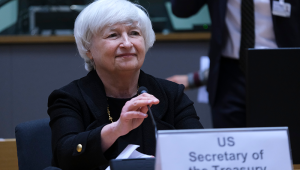Key takeaways
- Appreciate the importance of having a robust investment strategy
- Be aware of the economic situation and understand how the market is moving
- Assess and manage your credit risk
- Maintain good governance and internal controls
What should your treasury management strategy look like?
A robust strategy that documents potential risks to operations is vital. Addressing the wide range of risks with policies on investing that align to the risk appetite of your organisation and the economic conditions you are operating in can mitigate risks to your treasury activities. Overall policies for managing financial risk are derived from treasury strategy setting, the approach for managing currency and interest rate risks, investing surplus cash, setting counterparty limits and more. Such guidelines enable the creation of treasury policies.
Use key market indicators and sources to align your strategy to your organisational objectives and the economic situation. In times of economic contraction or recession, shift your strategy to investing with institutions with stronger credit ratings and financial sustainability, such as government deposits, treasury bills or bonds.
Why should you consider the economic situation when shaping your strategy?
Key indicators of the performance of both your country’s and global markets are useful tools for making investment decisions and shaping the direction of your treasury strategy. Worsening economic conditions indicate a need for a more risk adverse strategy to protect the principle sums invested and other indicators such as the sovereign credit rating of a country you are investing in, the credit rating of particular institution or prices of a credit default swap on the institution.
The economic landscape is dynamic and uncertain. Therefore, having a close alignment between the strategy and consideration of those risks created by economic circumstances is crucial. Before the global financial crisis, credit and counterparty risk did not merit the attention it deserves. Large institutions were perceived as safe and not exposed to risks. It is important to give attention to macroeconomic circumstances and the risks posed to individual institutions where possible.
Why do you need to understand your organisation’s credit risk?
Having an understanding of your own credit risk will influence external parties’ willingness to invest or do business with you; whether this is lenders, suppliers or leasing companies.
You may at some point go through the process of being assessed by a credit rating agency, such as in the case of going to the market to borrow cash. Having your credit analysed will start often with your historical financial position with a forward view of your future financial position. Credit analysts will often focus on your organisation’s ability to control and mitigate risk rather than outperform.
How should you assess your organisation’s credit risk?
When managing credit risk in investing, always think: security first, liquidity second, yield last.
A useful tool for assessing credit risk is market implied ratings. These ratings estimate the probability of default by an individual, organisation or country.
Another useful option is the credit default swap. This is a financial instrument/contract for swapping the risk of a counterparty defaulting on a debt. However, credit default swap prices reflect much more than a debtor’s credit worthiness. Treasurers can use each of these indicators to imply a change in credit limits. You may also consider share and bond-price movements. Due to the volatility in financial markets, an organisation should be able to review its exposure flexibly.
Why are internal controls and good governance important?
Underpinning any successful treasury management function are the principles of good governance and controls. Ensuring transparency of operations and decisions is vital. You could have the most robust strategy possible, but without a framework of controls and governance there is no evidence that decisions are being made responsibly with the organisation and stakeholders’ best interests in mind.
There are a range of models that treasury functions operate. They vary in the size, responsibilities and composition of staff. These models can be unclear in certain organisations. Therefore, it is better practice to apply broad principles of a control framework to your operations – such as ensuring segregation of duties are in place to prevent fraud and identifying errors or prior authorisation of financial transactions by those authorised. Clear recorded procedures should be in place, and if possible an independent body that is specially charged with scrutiny of treasury activities to promote transparency of decisions and activities.
Questions for you
- Do you understand the economic climate you are operating in and have systems in place to analyse the market?
- Do your treasury policies accurately reflect your organisation’s objectives and address any risks in reaching them?
- Are you confident that your investment counterparty is strong financially?
- Are you comfortable with your credit risk?
Sources of further information
CIPFA Treasury Management Network – join for the latest advice, guidance and updates on treasury management.
TISonline Treasury Management Stream – a comprehensive guide to the investment of local authority funds, debt management and treasury management practices.













